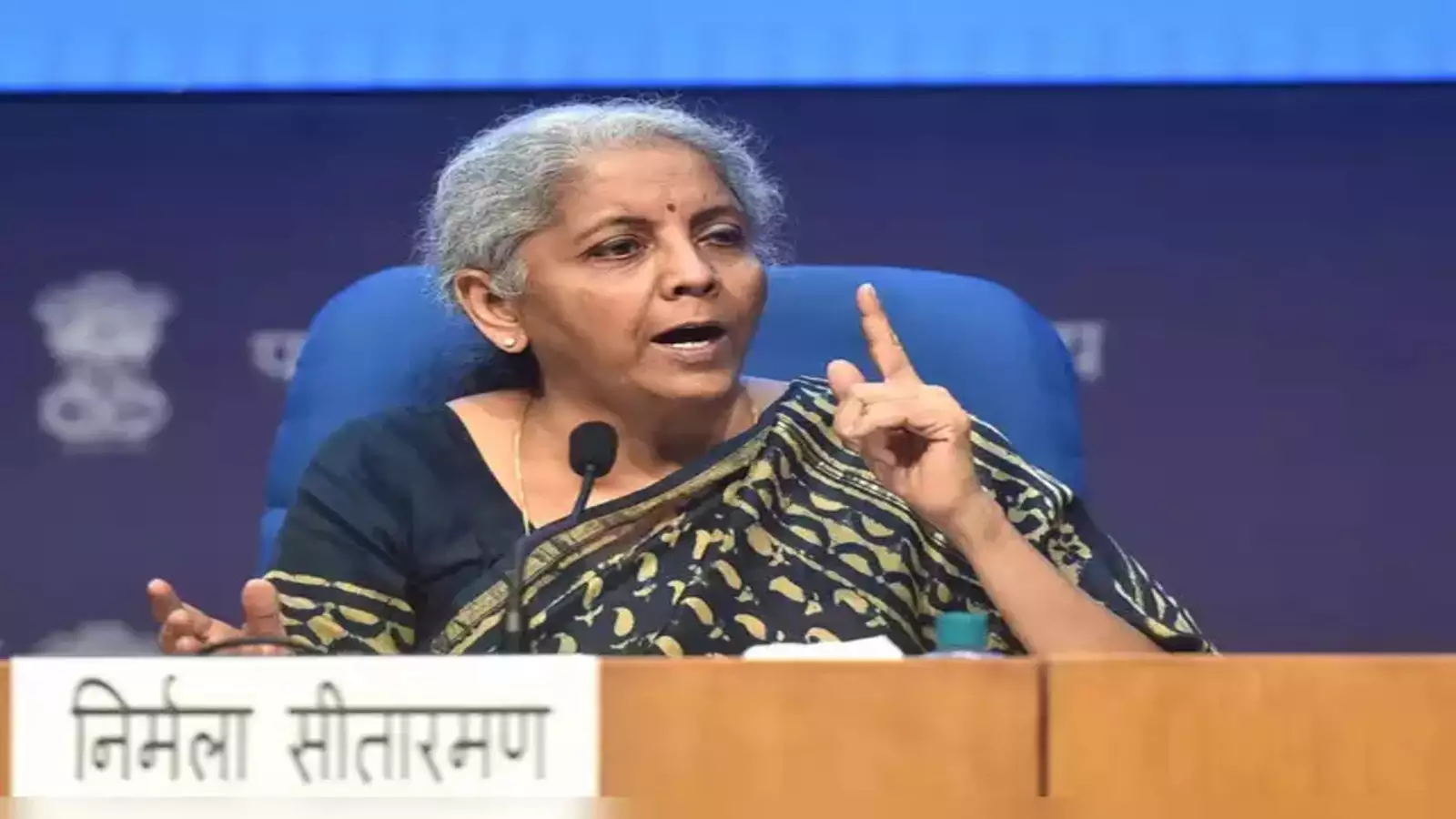At Least 9 Passengers Died, And 41 Others Were Injured After Three Rear Coaches Of The Stationary Sealdah-bound Kanchanjunga Express Derailed On Monday Morning After A Goods Train Collided With It From The Rear In West Bengal’s Darjeeling District. Officials Fear That The Toll Could Rise As Multiple Agencies Of The State And Centre Work To Rescue Passengers Who Could Still Be Trapped Inside. Visuals From The Site Showed One Of The Bogies Suspended In Mid-air.
The Accident Occurred At Around 8:30am And Took Place Some 11 Km From New Jalpaiguri Station In North Bengal, One Of The Largest And Busiest Stations In The Northeast Frontier Railway Zone In Eastern And Northeastern India.
Prime Minister Narendra Modi Has Announced A Compensation Of ₹10 Lakh From Pmnrf For The Next Of Kin Of Each Deceased ₹2.5 Lakh Towards Grievous And ₹50,000 For Minor Injuries.
The railway line that passes through Jalpaiguri in West Bengal is not yet covered under the Centre’s “Kavach” train collision prevention system, which may have helped prevent the accident that killed nine people and injured 41 , confirmed senior officials.
“We were in the process of installing the system on the line,” said railway board chairperson Jaya Varma Sinha.
The Kavach system, launched in 2020, works on an elaborate communication system that bounces off radio and GPS signals between trains, tracks and signals to prevent trains colliding during adverse conditions. On lines equipped with this technology, the system will automatically apply a train’s brakes – even if the driver doesn’t – if a driver jumps a signal or another train is within touching distance on the same line.
“Its presence could have potentially saved the eight people who died in the collision,” said a former member (traffic), asking not to be named.
Around 8.55am on Monday, a freight train barrelled into the back of the Kanchanjunga Express, heading towards Kolkata, on the same line, near New Jalpaiguri in West Bengal. Railway officials, who asked not to be named. However, a snag hobbled the signalling system between the Ranipatra railway station and Chattar Hat junction, and all trains travelling on the section were allowed to skip the signals, subject to some clauses.
The standard protocol, known as a TA/912, stipulates that pilots must drive at speeds below 15km/hr if conditions are clear, and below 10km/hr if it is raining (as it was on Monday morning). Another clause says all train drivers passing through the section must wait before every signal for a minute during day time and for two minutes during nights.
“The goods train driver was operating at a much higher than the prescribed speed limit leading to the accident,” said an official who asked not to be named.
Kavach is a central government programme aimed at securing India’s ageing 68,000km-long railway network. However, only 1,500km have been equipped with the Kavach system since it was first rolled out, said a railway official who asked not to be named.
“The railways plans to deploy the safety system on the Delhi-Guwahati route. West Bengal falls within the 3,000km of tracks set to be protected by Kavach this year,” said Sinha, adding that suppliers have to ramp up the implementation of the safety system to ensure Kavach touches every part of the country.
The first field trials of Kavach on passenger trains started in February 2016; it was adopted as a national automatic train protection system in July 2020. “The Indian Railways will install Kavach in 3,000 rail km this year and in 2025,” Sinha said.
“Recently, safety trials for Kavach were successfully conducted on the Mathura- Palwal route,” an official close to the development said.

The Kanchanjunga Express Accident
What Happened
The Kanchanjunga Express was en route to its destination when it derailed near Dhubri in Assam. Preliminary reports suggest that the accident occurred due to a combination of factors including potential track defects, excessive speed, and poor weather conditions. At the time of the derailment, the train was reportedly traveling at a speed higher than the permissible limit for that particular section of the track.
Immediate Aftermath
The derailment caused several coaches of the train to overturn and collide with one another, resulting in a chaotic and devastating scene. Emergency response teams, including the National Disaster Response Force (NDRF), local police, and railway officials, were promptly dispatched to the site. Rescue operations continued throughout the night, with rescuers working tirelessly to extricate passengers trapped in the mangled coaches.
Casualties and Injuries
As of the latest reports, the accident has claimed the lives of at least 50 passengers, with over 200 others sustaining varying degrees of injuries. Many of the injured were rushed to nearby hospitals, where medical teams worked round the clock to provide urgent care. The severity of the injuries ranged from minor cuts and bruises to critical conditions requiring extensive medical intervention.
Investigations and Causes
Initial Findings
Early investigations point towards a combination of track defects and human error as the primary causes of the derailment. Eyewitness accounts and data from the train's black box suggest that the train was moving at a speed significantly above the recommended limit, which might have contributed to the derailment on a particularly sharp curve of the track.
More News: top 10 daily news updates 2024
Technical Assessments
Railway officials have initiated a thorough examination of the track infrastructure and maintenance records. Preliminary technical assessments indicate that certain sections of the track were in need of urgent repairs and may not have been adequately maintained. Additionally, the signaling system in the area is being scrutinized to determine if any lapses occurred that could have prevented the accident.
Response and Relief Efforts
Government Action
In response to the accident, the Indian government has announced a comprehensive relief package for the victims and their families. Compensation has been promised to the families of the deceased, while financial aid and medical support are being extended to the injured. The government has also ordered a high-level inquiry to ascertain the exact causes of the accident and to recommend measures to prevent such incidents in the future.
Public and NGO Support
The tragedy has prompted an outpouring of support from various quarters, including non-governmental organizations (NGOs) and the general public. Volunteers and local residents have come forward to assist in the rescue and relief operations, providing food, water, and other essentials to the affected passengers and their families.
Safety Measures and Future Prevention
Immediate Measures
In the wake of the accident, the Indian Railways has announced immediate measures to enhance safety across its network. These include stricter enforcement of speed limits, comprehensive track inspections, and the deployment of advanced safety equipment. Additionally, refresher training programs for railway staff are being planned to ensure adherence to safety protocols.
Long-term Strategies
Looking ahead, the Indian Railways is considering the implementation of advanced technologies such as automated track inspection systems and real-time monitoring of train speeds. Investments in modernizing the rail infrastructure, including the replacement of outdated tracks and signaling systems, are also being prioritized to ensure passenger safety and prevent future accidents.
Read Also: Gayatri Jayanti 2024
Conclusion
The Kanchanjunga Express accident is a stark reminder of the vulnerabilities within the Indian railway system. As the nation mourns the loss of lives and supports the recovery of the injured, it is imperative that comprehensive and sustained efforts are made to enhance the safety and reliability of rail travel. The lessons learned from this tragic incident must pave the way for a safer and more secure future for the millions of passengers who rely on India's extensive railway network.
Other Popular News Post:
No dossier on Terrorists New India Kills Them | International Labor Day | PM Modi's Photo Removed From Covid Vaccine Certificates | World Press Freedom Day 2024 | Lok Sabha Election 2024 | Earthquake today: Arunachal Pradesh Hit | Arvind Kejriwal Bail | Rajya Sabha MP Shri Sushil Kumar Modi | Pnb Share Price Target 2025 | Heatwave Warning for North India | Lok Sabha Elections Phase 6 | Cyclone Remal Slams | Cyclone Remal Slams Into India | Anant-Radhika's 2nd Pre-Wedding Bash | All Eyes on Naama Levy | Exit Poll 2024 Highlights
Explore other popular Posts:
Blog | News | Entertainment | Education | Sports |
Technology | Cryptocurrency | Stock | Home | Sitemap





